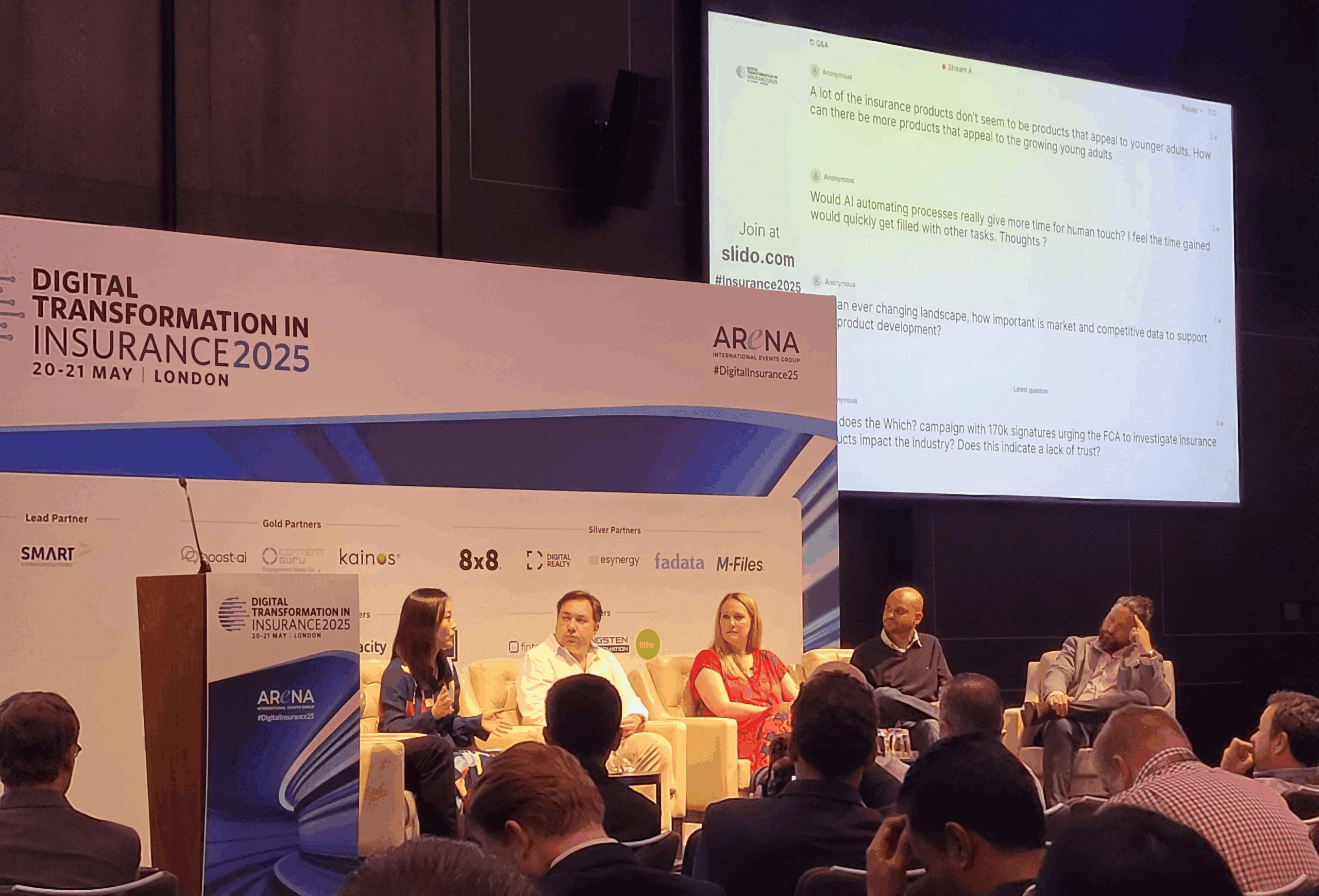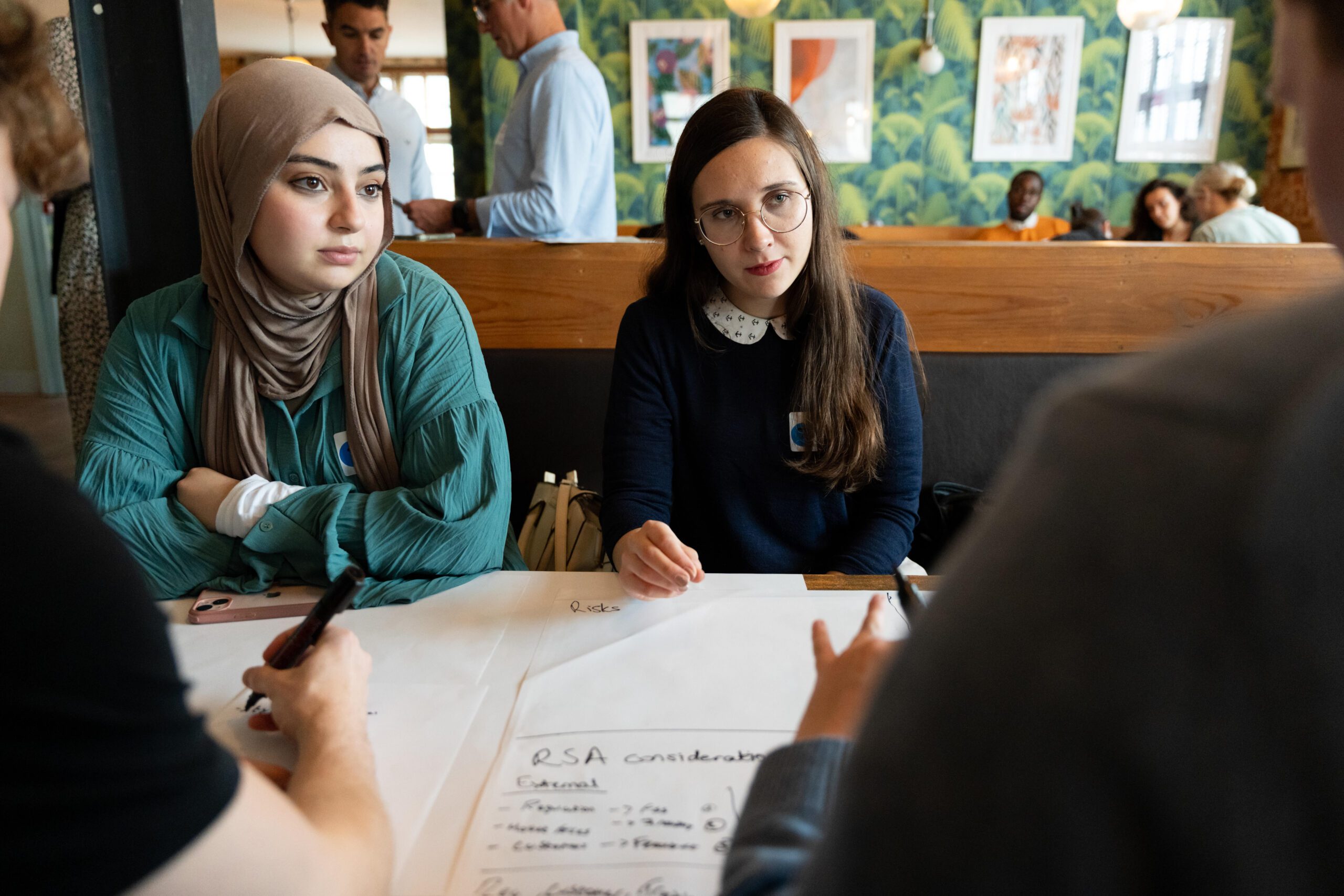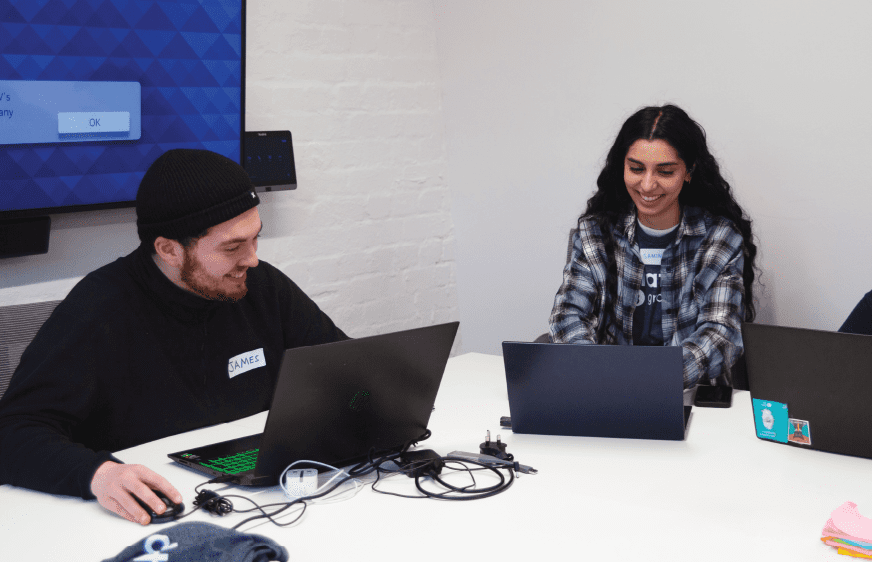
How to embrace AI without losing your people
Discover our insights on how to develop a strategy that makes the most of man and machine.
AI is surrounded by a mixture of excitement and fear. It promises so many benefits - from speeding up data collection to predicting customer behaviour. But the potentially negative consequences still weigh on our minds. Clickbait headlines threaten job losses and privacy breaches due to AI - all playing into our fears that technology may replace us.
From the Industrial Revolution to today’s cloud systems, technology is designed to improve our working lives. There’s a wealth of benefits to be gained from implementing AI in your business. However, whilst we appreciate it when technology helps us work more efficiently - we are only human. The idea of change can be alarming and so is the idea that humans could become redundant. Our resistant attitudes to change often make business transformations, like the introduction of AI systems, challenging. When adopting AI is perceived as Man vs. Machine, it’s no surprise that it becomes an uphill struggle.
We then need to change the conversation around AI. Move away from the fear to focus on how AI can empower us to do more, make better decisions and produce better outcomes. One way to ensure your team feel empowered – not erased – by AI is to adopt a people-first AI strategy.
Evolution over eradication
No one can accurately predict what our working life will look like once AI is standard in business operations. Nevertheless, it’s important to address fears surrounding AI now. Rather than replacing human’s existing roles, AI will prompt the next step in the evolution of these jobs. Employees need to understand how their responsibilities will be impacted by the introduction of AI systems. And yes - some tasks employees currently do may be better performed by AI. It’s not only manual jobs like warehouse operatives that now have aspects of their role automated, but also doctors as AI transforms outpatient care.
Most jobs have changed along with the development of technology. Consider how journalists operated thirty years ago. Short hand was a second language. Success was writing for one of numerous national print publications. Today digital platforms reign, and even the Dictaphone has been replaced by voice recorder apps on mobile devices. Roles must then embrace the benefits of the technology available and adapt accordingly. AI systems can make light work of analysing large data sets, leaving us more time to focus on drawing actionable insights. AI then marks a new era in the evolution of job roles. Maybe this is a shift in responsibilities - taking the focus off manual data analysis for example. More likely though, it also involves supporting employees as their roles change and investing in reskilling employees.
Collaboration
Just as we promote collaboration between different teams, we need to take the same approach with AI. Placing the onus on how humans can work hand-in-hand with AI, we’re at the start of AI finding its place in businesses which is both exciting and challenging. And it’s up to us to develop a working world that embraces the best of humans and AI. A collaborative approach is vital to making the most that both have to offer.
Thanks to the explosion of the amount of data we have available today, AI systems have a lot more to work with. Combine this with increased computational power to run different algorithms, and AI is a very powerful tool for success. AI systems produce predicted outcomes, and humans apply judgement about the outcome predictions; together this makes for more informed decision making. But employees won’t accept AI systems if they believe their skills are being belittled. Whatever outcome is implemented involves a combination of both human and AI insights, but ultimately the decision is made by a human. Whilst our processes evolve to incorporate AI, we must ensure that this combination gives control to people. Employees need to feel empowered by AI to make better decisions, seeing it as another tool in their technical toolkit.
As the AI landscape continues to shift, we’re moving beyond AI’s obvious data applications to more creative uses. But let’s remember that businesses’ adoption of AI is still relatively new. It’s imperative to recognise that employees and employers are taking this journey together and no one has the right answers. By applying a strategy that puts people first, we can foster a positive mindset about AI integration. Our relationship with AI now will inform the design of new systems in the future. Going forward, we must understand how to redesign job specs based on systems that embrace the best of man and machine.
Find out more about the Grayce Community




